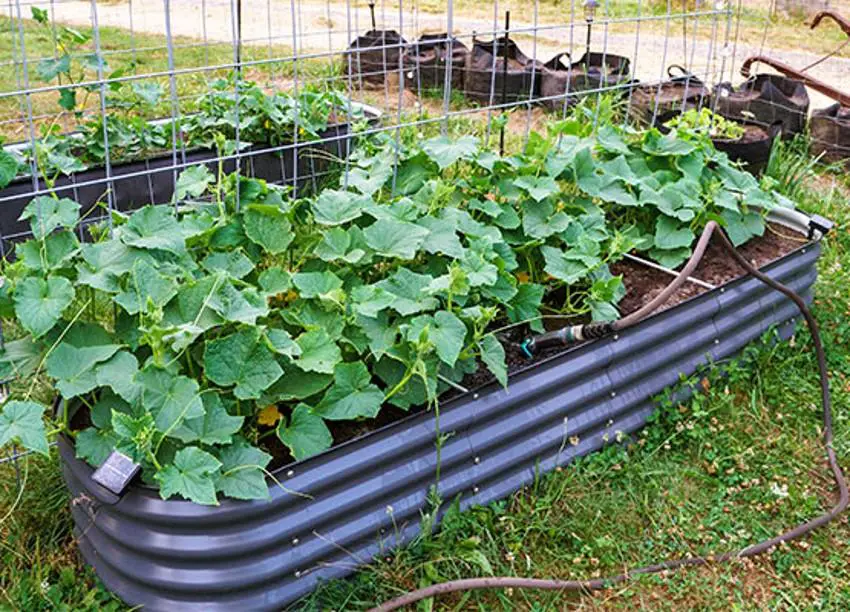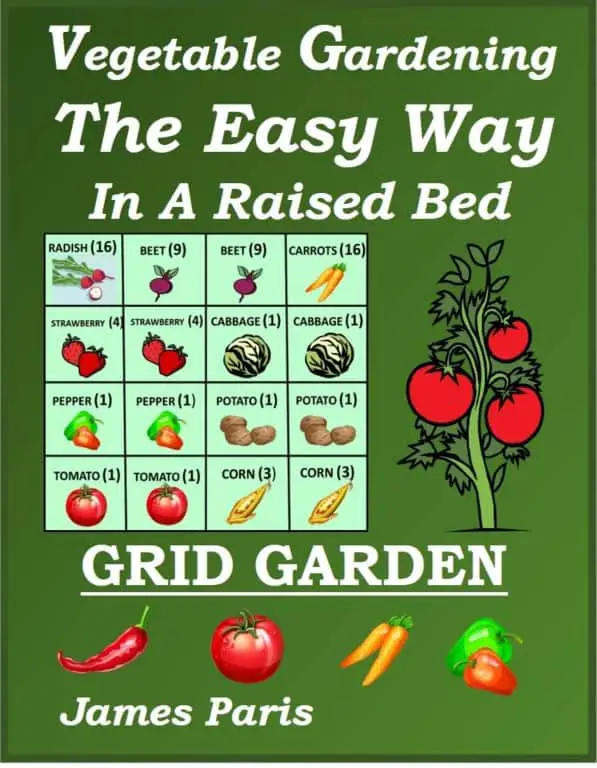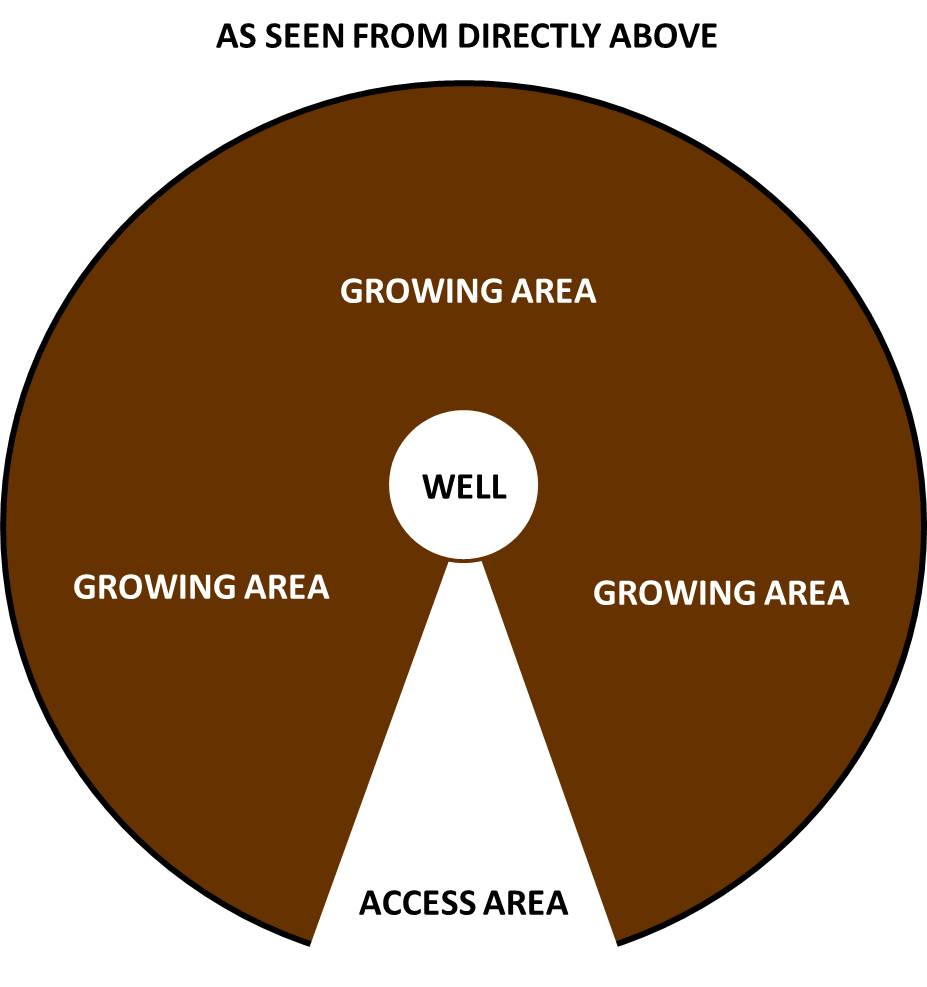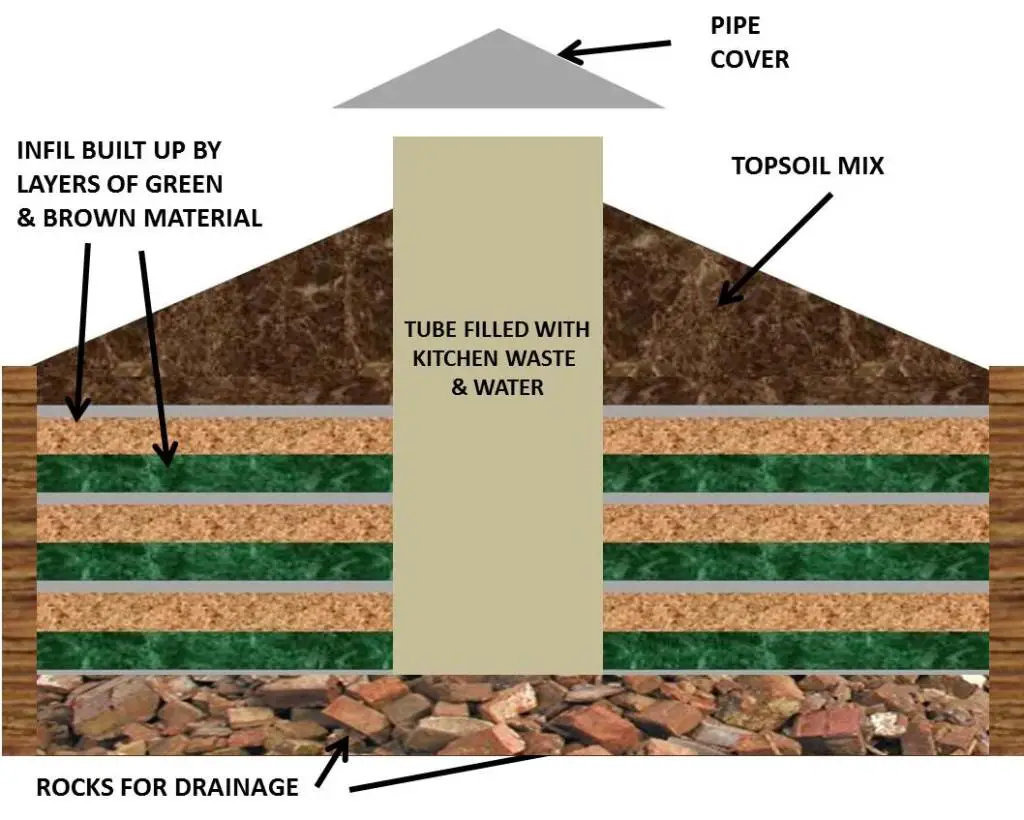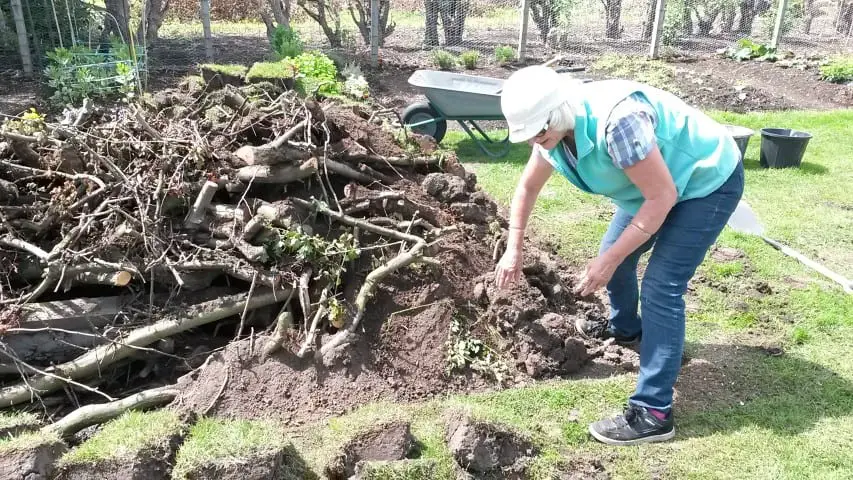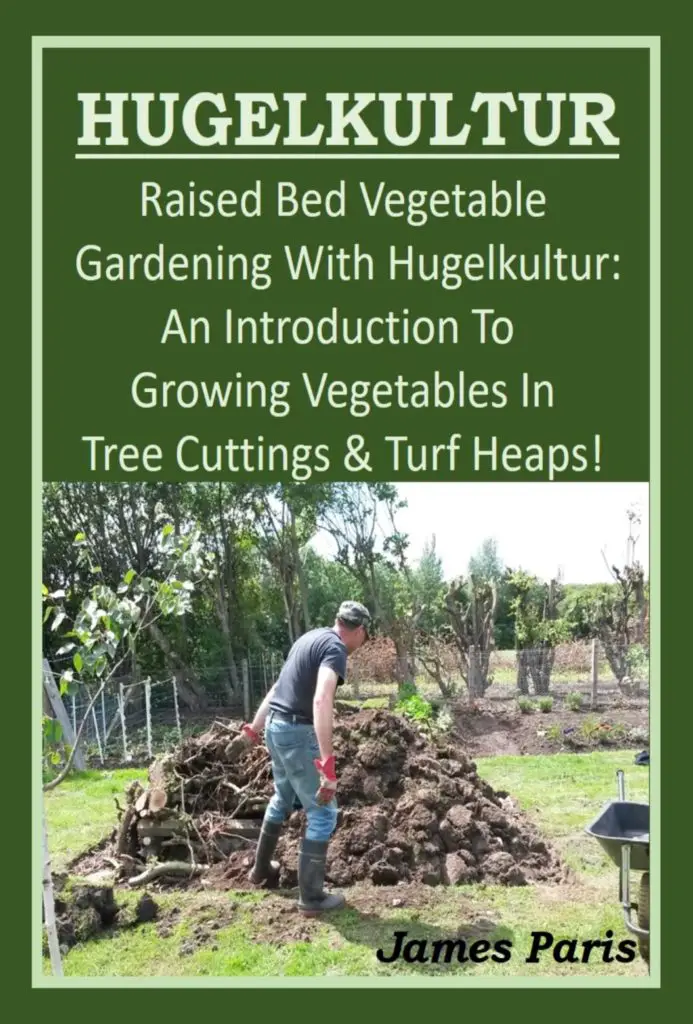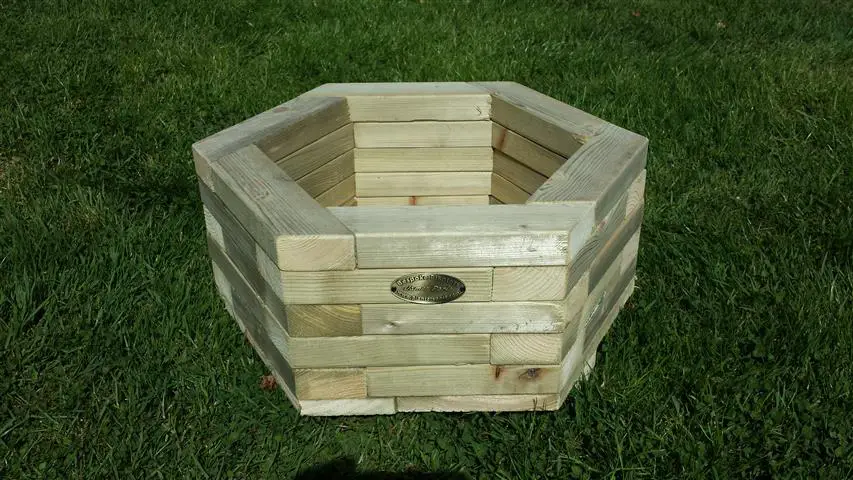Some people may think that to create a vegetable garden without actually digging. Is a mere pipe dream – but they could not be further from the truth.
This is a concept called no-dig gardening. And it is a well established method of gardening particularly vegetable gardening.
No-Dig gardening techniques include the following methods.
- Raised bed gardening
- Lasagna gardening
- Keyhole gardens
- Square foot gardens – a form of Raised Bed
- Straw bale gardening
- Container gardening
- Hugelkultur or ‘mound culture’
It will be no secret to say. That the 1 thing that unites all these methods is this. There is no real digging or hard labour involved. Except in the early stages where they have first of all to be built to begin with.
So what is no-dig gardening?
To begin with, you have to make a distinction between 2 types of no-dig garden. Both of which hold the same title but for different reasons. The fact is that for both styles an element of digging – or turning over – with a hand fork is usually all that is needed.
If there are no heavy tools like a full-sized garden fork or spade needed. Then they can hold the title of no-dig gardening.
The main difference could be explained if we examine 7 of these techniques in greater detail. At the same time answering the question. How to go about constructing a no dig garden for growing vegetables in particular. As that is the primary aim of this post.
for growing vegetables in particular. As that is the primary aim of this post.
No-Dig Method 1 – Lasagna gardening:
The first way or example of a no-dig garden to grow vegetables is a Lasagna garden. Or layer composting as it is also known.
Or layer composting as it is also known.
- Prepare an area for your garden. It must get between 6-8 hours sunshine daily and not be shaded by overhanging trees.
- Lay down a layer of cardboard or newspapers and give a good soaking.
- On top of this lay down 3-4 inches of green vegetable matter such as kitchen vegetable waste. Grass trimmings, stinging nettles or comfrey cuttings (without the roots.
- Lay down a thick layer of ‘brown’ material like leaf moult, shredded cardboard, or straw
- Cover with a good 4 inch layer of compost/soil mix.
That is the basis of a lasagna garden. This layering process can be repeated until you get to the depth you need. Or just layer once as described.
That is the basis of a lasagna garden. This layering process can be repeated until you get to the depth you need. Or just layer once as described.
No-Dig Garden Methods 2 & 3 – Raised Bed & Square Foot:
The other main way described as no-dig involves the Raised Bed garden system – which includes the Square Foot garden.
Again this method of vegetable gardening does not involve any heavy digging at all, and indeed no addition of extra layers or organic material to the pile – unless you really want to or have plenty material to hand!
This method involves building a frame to contain your soil/compost mix. Pouring in the mix – and start planting!
Yes it is that simple – but highly productive if you get the mix right for vegetable growing.
What is a good mix for a Raised bed garden?
First of all I have to explain that the soil in a Raised bed should not just be topsoil from your garden. Unless you have spectacularly good loamy topsoil of course.
The reason for this is that topsoil on its own, whether in a raised bed or plant-pot. Will tend to compact in a short time. This will strangle your plant roots. In turn depriving them of the nutrients and water needed to grow to their full potential.
For this reason a good light and friable mix is highly recommended for Raised Beds of any kind.
Now there are several mixes you can use – which are really variations on the same theme. But the one I would use for most vegetables is this.
1 Part vermiculite for – water and nutrient retention, soil structure.
1 part Home-made compost if possible.
1 part good topsoil.
This mix will give you all you need for any Raised Bed garden system. The mix will be light and the soil structure good, and thanks to the compost it will be rich in nutrients.
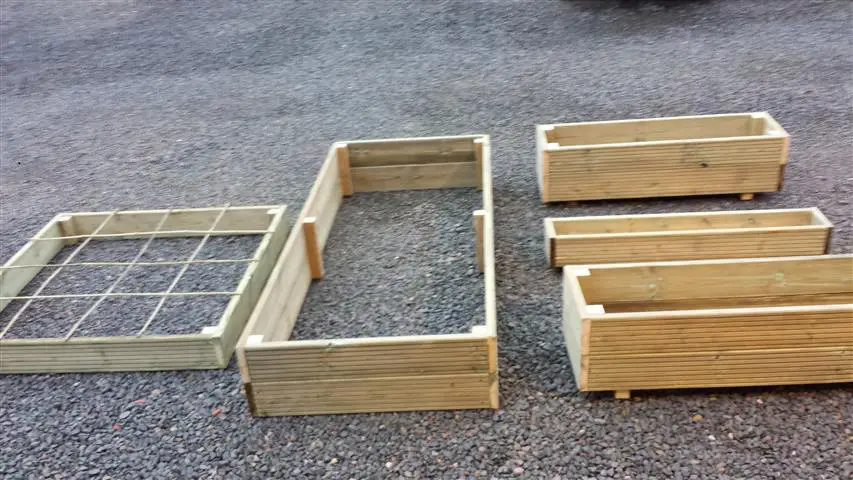
How long does Raised Bed soil last?
The mix above will last for several years. If at the end of each growing season you mix through a little rotted horse manure or well-rotted compost.
Leave this to break down over the winter months. And by the Spring your Raised Bed will be ready once again to ‘produce the goods’.
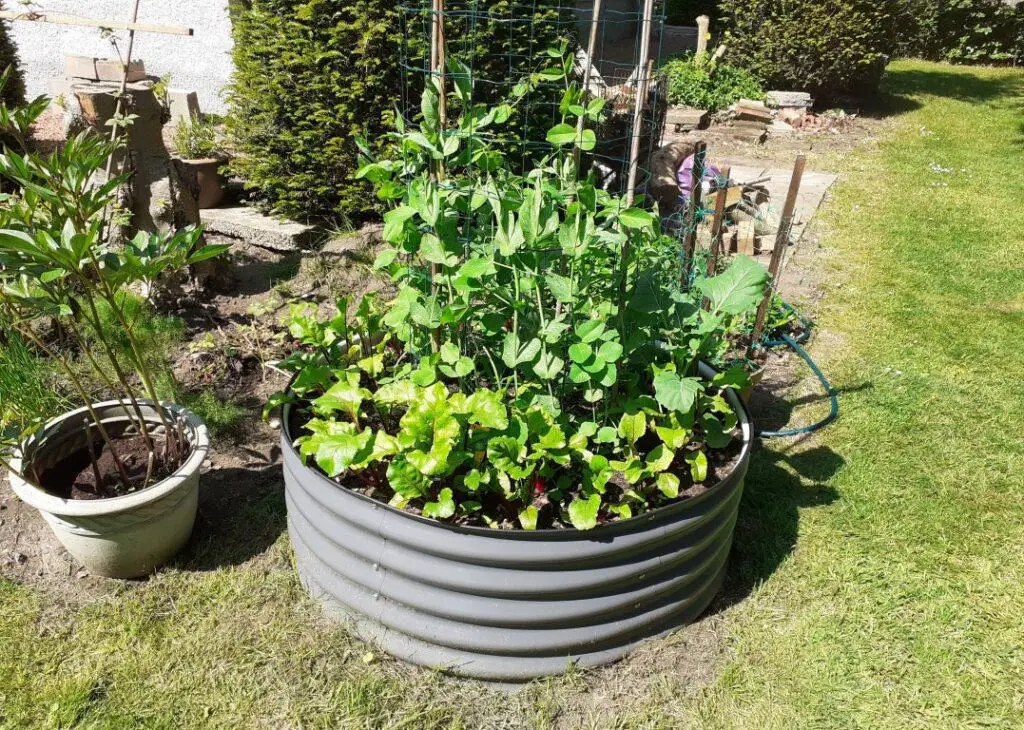
Watering the whole lot over with a good mix of organic plant food is another way to keep your bed rich in nutrients.
This is easy to make from just about any organic materials. Weeds or stinging nettles (without roots) around the garden.
You will find a lot of recipes for this free organic plant food on this article. You will never have to buy plant outdoor food again!
You will never have to buy plant outdoor food again!
The square foot garden method is described in this article on Square Foot Gardening .
.
No-Dig Garden Method 4 – Keyhole Gardening:
The term ‘Keyhole Gardening‘ was first coined by the charity sendacow.org. (now rippleeffect.org) Which operates throughout the African continent and elsewhere. Producing inovative methods to grow vegetables. Even in conditions not conjusive to the plants themselves.
The method itself is similar in many ways to raised bed gardening. In that the growing area is raised and contained within a recognised boundary.
Where it differs, is that the keyhole method also includes a ‘feeding system’ in the form of a center well. Also an access point where the well is supplied with waste vegetables. This waste composts to form valuable nutrients. Which leak into the surrounding area to feed the plants.
The shape of this ‘Raised Bed’ is in fact what gives it the name. As you may see from the image, this forms a keyhole shape when looked at from above.
The area itself is filled to level with whatever organic materials are to hand. Sticks, grass, vegetable cuttings etc. Then topped off with a good 6 inches or more topsoil. Rising to a slight mound in the center as in the following image.
This is the basic principle behind the Keyhole Gardening method. Described fuller in this article on Keyhole Gardening methods.
methods.
Rest assured that although started in the African continent. It has now spread globally simply because it is an ingenious method that does actually work well.
No Dig Gardening Method 5 – Straw Bale Gardening
Originally developed way back in history. With homesteaders growing vegetables in old straw bales and middens. The idea of growing vegetables in straw bales, came along with the birth of the mechanical hay baler in the 1850’s.
Many people have tried to claim this method as their own since then. But the fact is that it has been a ‘thing’ for over 150 years now so the concept is well established.
The actual proceedure for growing vegetables in straw bales is simple enough. But a few details cannot be missed in the process. Especially the process of priming the bale before planting.
Why prime the straw bale?
The fact is that straw – which is a by product of serial crops such as wheat, barley, oats etc – has zero nutrients. It consists of carbon only. This would be regarded as the ‘brown’ material for a compost heap.
The only way to grow anything in a neautral straw bale is to infuse it with nitrogen. This starts the process of composting. And the creation of the nutrients needed to grow vegetables.
The process for priming or conditioning the straw bale is explained here. But it is simple to do and takes a little over 2 weeks before the bale can be used.
But it is simple to do and takes a little over 2 weeks before the bale can be used.
Most if not all types of vegetables can be grown in straw bales once they have been prepared. The bale itself will last for 2-3 years altogether. This can be extended for another year or so if your surround with a wooden frame. In much the same way as you would a Raised Bed garden as in the image above.
The complete process for creating your own Straw Bale garden can be found on this link .
.
No-Dig Garden method 6 – Hugelkultur:
Hugelkultur – pronounced hoo-gel-kool-toor. Was initially developed in the Black forest area of Germany many centuries ago. And is still a popular way to grow vegetables in areas that do not have good soil or face other problems with nature.
Hugelkultur (meaning ‘mound culture’ ) is created by making a mound with heavy wood at its base. Then progressively filling in the gaps with smaller twigs and other forest waste.
As the mound develops then ‘green’ material is added between the gaps. Until the whole mound is finally covered with topsoil ready for planting.
What are the benefits of a Hugelkultur?
The Hugelkultur is a great user of old wood and forest waste that would otherwise be burned. or maybe shipped off to the landfill. If you have an area of unproductive ground. Or even waterlogged ground, then a Hugelbed as it is also called, can be the ideal solution.
Interestingly the Hugelkultur has another unique advantage over its peers. And that is that it is self-irrigating after the first couple of years or so.
This is due to the fact that the large logs put in at the base and built up to form the mound. These actually convert to a sponge-like material as decomposition begins. This material then traps water for some time and therby feeds the plants growing above.
Some users of Hugelbeds report only having to water the area 3 or 4 times throughout the season. Particularly as the bed gets established after a couple of years.
What can you grow in a Hugelkultur?
Most any vegetables that you can grow in a traditional way in your area. Can be grown in a hugelbed. Except for deep root vegetables like potatoes. Or tap root veggies like parsnips might not do too well.
Other than these. Tomatoes, onions, peppers, eggplant or courgette. Along with a host of others, can all be grown successfully in a Hugelkultur. Some benefits of Hugelkulter gardening would include…
- Clear up waste: A hugelkultur is a great way to clear away old forest debris and other wood scraps.
- Little or no watering: Self irrigating after the first 2-3 years.
- Long lasting: Will last over 10 years and up to 15 years plus.
- No Back-ache!: Easy to maintain and service with less bending over than a traditional bed.
No-Dig Method 7 – Container Gardening:
This is perhaps the best known of all no-dig gardening methods. Although many associate container gardening as a method to grow flowers and herbs. Rather than vegetables as such.
The fact is that all the methods described above could pass as forms of container gardening. Because they are all diferent forms of ‘containers’.
The advantage that growing in small containers has is simple – they can be moved around to follow the sun!
Also growing in containers is popular because not everybody has a vegetable garden. Or even an area to put a small Raised Bed. Yet many people, even city folks have a window space. Here they can place a pot to grow peppers or tomato plants for example.
peppers or tomato plants for example.
More details on growing in containers here
Summary of No-Dig methods:
No-Dig gardening is popular for all the reasons described above – and then some!
The main thing to take away from this article is that no matter what your situation. If you really want to grow your own vegetables. Then there is a method that will suit your own particular circumstances.
Whether you live in a city apartment. Or an area of land surrounded with forest. You can indeed enjoy al the benefits of home grown veggies – it just takes a little imagination!
VEGEGA METAL RAISED BEDS CLICK HERE

